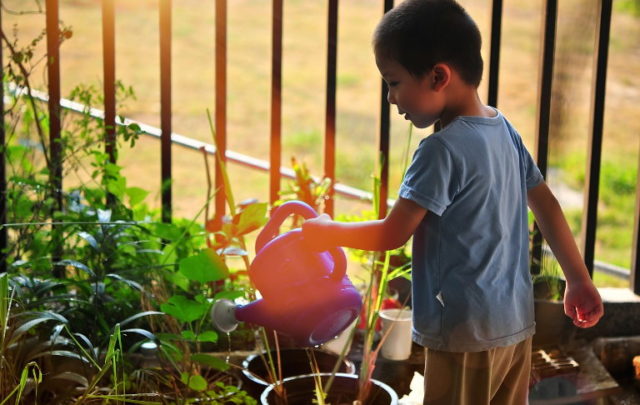Our current global system of production and consumption of goods and services is not working for the planet, nor for its people and communities. Economic growth demands ever greater levels of consumption of newer, better, and cheaper products. Such consumption, however, undermines environmental quality, compounds inequity, and burdens communities with mounting waste management costs. It also leaves people increasingly overworked and anxious to keep up.
What can we do to transform the way goods and services are consumed and produced in a globalized system with many powerful, vested interests? Fortunately, communities across the United States are innovating and cultivating the seeds of such a transformation. These efforts provide hope that even at the local level, we can change the way we produce and consume and, in doing so, build community resilience for an uncertain future.
Sustainable consumption is a new systemic framework that challenges consumption-based growth and proposes new ways for people and communities to prosper. It is about consuming differently and changing the way goods and services are provided so as to improve quality of life for all within ecological limits. Although the field of sustainable consumption is still evolving, the following six specific practices are generally emphasized:
- Reduction of the amount of materials and energy consumed: Smaller homes, more efficiently made products, absolute reductions in the amount of goods purchased, streamlining or eliminating product packaging, food waste prevention.
- Reuse of products and materials: Reused building material stores, remanufacturing businesses, online direct-trade marketplaces (e.g., Craigslist), repurposing things you have to meet a new need.
- Repair and maintenance of products to extend their useful life: Repair businesses, repair cafes and fix-it clinics, the do-it-yourself (DIY) repair move
- Sharing of products, services, and land, including via borrowing and renting: Tool and other lending libraries, clothing swaps, food gleaning programs, community gardens.
- Use of durable, long-lasting, and upgradable products and materials: More durably made goods, goods that are more repairable, leasing versus purchasing, extended product warranties.
- Use of lower-impact, equitably sourced products made using materials and resources that are rapidly renewable, able to be replenished, and less toxic than conventional materials: Institutional sustainable purchasing policies, consumer education programs.
Depending on community makeup and goals, resources, partners and perspectives, sustainable consumption strategies vary in scope and focus. They can involve local government, grassroots innovators, university researchers, local foundations or business, nonprofit organizations, and other institutions as leaders or partners. This chapter provides a sampling of promising sustainable consumption initiatives in the areas of consumer goods, transportation, economic development, food, and housing that can make our communities more resilient.
There are many opportunities for communities across the country to chart a different, more sustainable path based on postconsumer, postgrowth values and strategies. For sustainable consumption to go mainstream, it will need to meet the practical, everyday needs of the majority of Americans: secure, well-paid jobs and affordable access to basic household goods and public places.
This post is based on a chapter from Post Carbon Institute’s 2016 book The Community Resilience Reader: Essential Resources for an Era of Upheaval.





